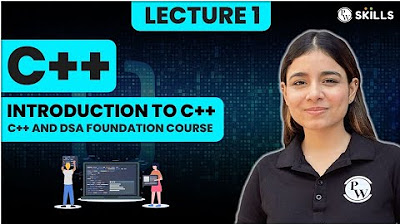Relational Query Languages
Summary
TLDRThis script introduces relational query languages, comparing them to an analogy of instructing two people to make coffee. It explains that query languages are used to request data from a database, and are higher-level than standard programming languages. The script differentiates between procedural and non-procedural query languages, using examples like relational algebra and relational calculus. It highlights the importance of these languages for data retrieval despite their complex syntax.
Takeaways
- 📕 Query languages are used to request information from databases.
- 🔧 Relational query languages are a type of query language used specifically for databases that store data in tables.
- 💵 There are two main categories of relational query languages: procedural and non-procedural.
- 💲 Procedural query languages, such as relational algebra, require specifying both what data is needed and how to retrieve it.
- 💱 Non-procedural query languages, like relational calculus, only require the user to specify what data is needed, not how to retrieve it.
- 💴 The analogy used in the script compares procedural query languages to instructing someone on both what and how to do a task, while non-procedural is like instructing only what needs to be done.
- 💳 Relational query languages are considered higher level than standard programming languages because they are embedded within them to interact with databases.
- 💰 Relational query languages are terse and formal, lacking the syntactic sugar of commercial languages, making them less user-friendly.
- 💶 Despite their complexity, relational query languages are essential for fundamental data extraction from databases.
- 💷 Examples of procedural query languages include relational algebra, while non-procedural examples include tuple relational calculus and domain relational calculus.
- 💸 The main purpose of relational query languages is to effectively retrieve information from databases.
Q & A
What is a relational query language?
-A relational query language is a language used to request information from a database. It allows users to specify what data is needed without detailing the steps to retrieve it.
Why is a query language considered to be at a higher level than a standard programming language?
-A query language is considered higher level because it is used within a user interface, often written in a standard programming language, to interact with the database. It's a layer of abstraction above the programming language, focusing on data retrieval.
What are the two categories of query languages mentioned in the script?
-The two categories of query languages are procedural query languages and non-procedural query languages.
How does a procedural query language differ from a non-procedural query language?
-In a procedural query language, the user specifies not only what data is needed but also how to retrieve it, whereas in a non-procedural query language, the user only describes the desired information without instructing how to get it.
What is an example of a procedural query language?
-An example of a procedural query language is relational algebra, where the user writes queries that carry out a sequence of operations to compute the desired result.
What is an example of a non-procedural query language?
-An example of a non-procedural query language is relational calculus, which includes tuple relational calculus and domain relational calculus, where the user simply specifies what data is required.
What is the analogy used in the script to explain the difference between procedural and non-procedural query languages?
-The analogy compares two people, X and Y, being asked to prepare coffee. X is only told to prepare coffee (non-procedural, like what is required), while Y is given detailed instructions on how to prepare it (procedural, like what is required and how to get it).
Why are relational query languages considered to be terse and formal?
-Relational query languages are considered terse and formal because their syntax is concise and not user-friendly, focusing on the technical aspects of data retrieval rather than ease of use.
Why do we need relational query languages despite their lack of syntactic sugar?
-We need relational query languages because they provide the fundamental techniques for extracting data from databases, which is their primary purpose.
What is the main intention behind using a query language according to the script?
-The main intention behind using a query language is to retrieve information from a database.
How does the script describe the syntax of relational query languages?
-The script describes the syntax of relational query languages as not being easier to read or express, lacking the syntactic sugar of commercial languages.
Outlines

此内容仅限付费用户访问。 请升级后访问。
立即升级Mindmap

此内容仅限付费用户访问。 请升级后访问。
立即升级Keywords

此内容仅限付费用户访问。 请升级后访问。
立即升级Highlights

此内容仅限付费用户访问。 请升级后访问。
立即升级Transcripts

此内容仅限付费用户访问。 请升级后访问。
立即升级5.0 / 5 (0 votes)






